Hyponatremia & Sleep Disorder Risk Calculator
Enter your sodium level and symptom count to calculate your risk of sleep disorders related to hyponatremia.
About This Tool
This calculator estimates your risk of developing sleep disorders due to hyponatremia based on your serum sodium level and reported sleep symptoms. It uses clinical guidelines to provide an approximate risk assessment. For accurate diagnosis, consult a healthcare provider.
When your blood sodium drops below normal, Hyponatremia is a condition where serum sodium concentration falls under 135mmol/L, leading to water shift into cells and a cascade of neurological symptoms. At the same time, many people struggle to get restful nights, and they often blame stress or caffeine without looking at the chemistry inside their bodies. The link between low sodium and broken sleep isn’t just a coincidence - it’s a real physiologic interaction that doctors are starting to understand better.
Key Takeaways
- Hyponatremia can disturb the brain’s water balance, causing daytime fatigue and nighttime awakenings.
- Common sleep disorders linked to low sodium include insomnia, obstructive sleep apnea (OSA) and restless‑leg syndrome (RLS).
- Antidiuretic hormone (ADH) spikes, fluid overload, and electrolyte shifts are the main mechanisms.
- Blood tests, sleep questionnaires, and overnight monitoring help uncover the connection.
- Correcting sodium levels through fluid management, diet and, when needed, medication often improves sleep quality.
What Is Hyponatremia?
Sodium is the primary extracellular electrolyte that helps regulate fluid balance, nerve conduction, and muscle function. When its serum concentration dips below the normal range (135‑145mmol/L), the resulting condition-hyponatremia-can be mild, moderate or severe depending on how low the number falls and how quickly it drops.
Symptoms range from mild (headache, nausea, mild confusion) to severe (seizures, coma). The brain is especially vulnerable because even a 2‑3% increase in intracellular water can raise intracranial pressure.
Causes include excessive water intake, heart failure, kidney disease, certain medications (like thiazide diuretics), and hormone imbalances that affect ADH release.
Understanding Sleep Disorders
Sleep isn’t a single event; it’s a series of stages that repeat throughout the night. Disruptions can arise from problems falling asleep (insomnia), staying asleep (fragmented sleep), or breathing interruptions (obstructive sleep apnea). Some disorders, like Restless‑Leg Syndrome, cause uncomfortable sensations that force the sleeper to move their legs.
When any of these issues become chronic, they feed back into daytime cognition, mood, and even metabolic health, creating a vicious cycle.
How Low Sodium Affects Sleep Physiology
The brain relies on a delicate osmotic balance to keep neurons firing at the right rate. Hyponatremia disrupts that balance in three key ways:
- Cellular Swelling: Water rushes into neurons, distorting the electrical gradients that dictate sleep‑wake cycles.
- ADH Surge: The body releases more antidiuretic hormone to retain water, which can worsen fluid overload and cause nighttime nocturia (the urge to urinate), interrupting sleep.
- Altered Neurotransmitter Levels: Low sodium can reduce the production of serotonin and GABA, both of which play major roles in initiating deep sleep.
These mechanisms explain why someone with hyponatremia may feel groggy during the day, have trouble staying asleep, or wake up gasping for air.
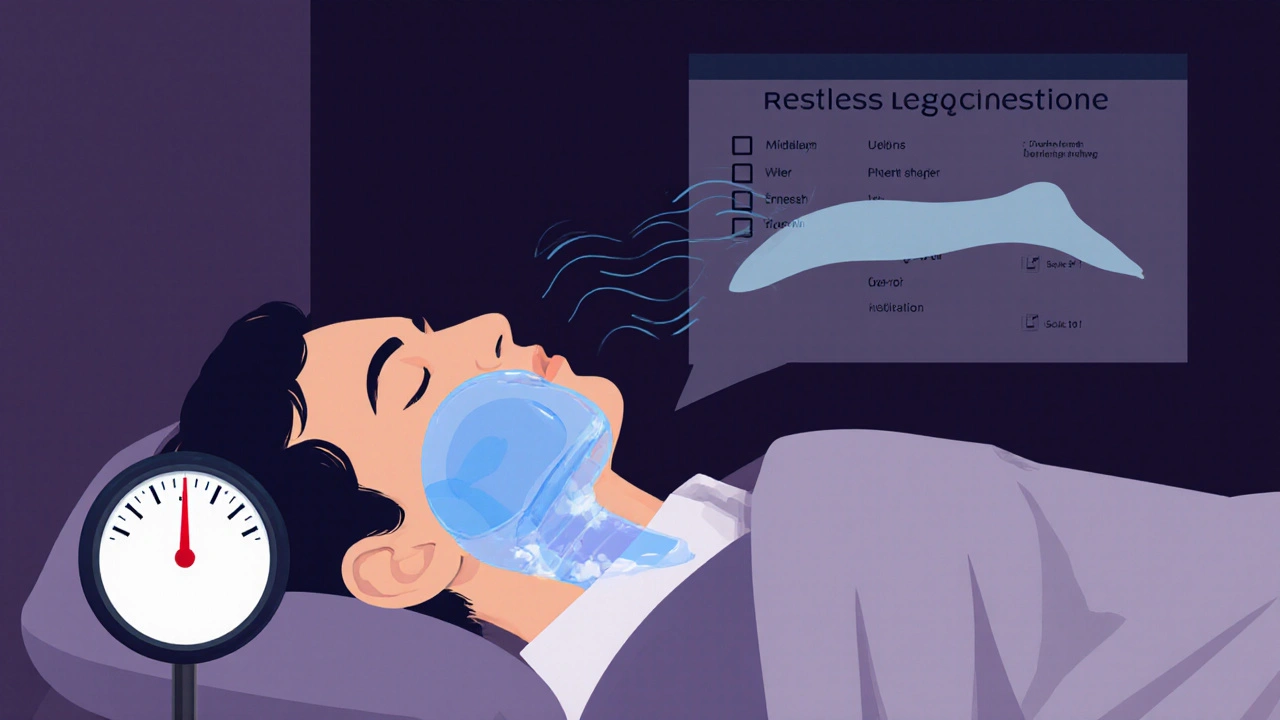
Specific Sleep Disorders Linked to Hyponatremia
Research from the 2023 International Journal of Sleep Medicine found that patients with serum sodium below 130mmol/L were twice as likely to report moderate‑to‑severe insomnia compared to those with normal levels. Below are the three most common disorders tied to low sodium.
| Sleep Disorder | Typical Sodium Range (mmol/L) | Probable Mechanism |
|---|---|---|
| Insomnia | 125‑130 | Cellular swelling & reduced GABA activity |
| Obstructive Sleep Apnea (OSA) | 120‑135 | Fluid shift to neck tissues → airway narrowing |
| Restless‑Leg Syndrome (RLS) | 130‑135 | Altered dopamine signaling linked to electrolyte balance |
In OSA, even a modest fluid overload can pool in the soft tissues around the throat while you lie down, making the airway more collapsible. For RLS, low sodium may change iron transport in the brain, a known contributor to the condition.
Diagnosis: Spotting the Connection
Doctors typically start with a basic blood panel to check serum sodium, potassium, and osmolality. If the result flags hyponatremia, the next step is a detailed sleep assessment.
- Sleep questionnaires: The Epworth Sleepiness Scale and Pittsburgh Sleep Quality Index help quantify subjective sleep disruption.
- Polysomnography: An overnight study records breathing patterns, oxygen saturation, and brain waves, revealing OSA or periodic limb movements.
- Urine osmolality test: Checks whether ADH is excessively active, pointing to a hormonal cause of low sodium.
Combining lab values with sleep data lets clinicians decide whether treating the electrolyte imbalance might resolve the sleep issue.
Managing Hyponatremia to Improve Sleep
Treatment hinges on the underlying cause and the severity of symptoms.
- Fluid restriction: For dilutional hyponatremia (excess water intake), limiting fluids to 1‑1.5L per day can raise sodium within 24‑48hours.
- Salt tablets or hypertonic saline: In acute cases, a controlled infusion of 3% saline restores sodium quickly but requires hospital monitoring.
- Medication review: Stopping or switching thiazide diuretics, SSRIs, or carbamazepine often corrects sodium within weeks.
- Address ADH excess: Vasopressin receptor antagonists (vaptans) reduce water reabsorption, allowing sodium to rise safely.
Once sodium stabilises, sleep quality often improves dramatically. A 2022 pilot study showed that patients who achieved serum sodium>135mmol/L reported a 30% increase in total sleep time and a 25% drop in apnea‑hypopnea index.
Practical Checklist for Patients
- Get a blood test that includes serum sodium, potassium, and osmolality.
- Track nightly sleep patterns: time to fall asleep, number of awakenings, and any breathing pauses.
- Limit fluids after dinner, especially if you’re on diuretics.
- Add a modest amount of salty foods (broth, olives, cheese) if you’re not on a sodium‑restricted diet.
- Discuss any medications that could lower sodium with your doctor.
- If you notice daytime confusion, headaches, or persistent fatigue, seek medical review promptly.
- Consider a follow‑up sleep study after sodium normalises to see if OSA or RLS has improved.
Small adjustments often make a big difference, and the payoff-a rested mind and body-is well worth the effort.
Frequently Asked Questions
Can hyponatremia cause snoring?
Yes. Fluid buildup in the neck tissues from low sodium can narrow the airway, leading to louder snoring and even apnea episodes.
Is it safe to drink a lot of water before bed if I have hyponatremia?
No. Excess water dilutes sodium further and raises the risk of nighttime urination, both of which worsen sleep quality.
How quickly can sodium levels be corrected?
Mild cases may improve in a day or two with fluid restriction, while severe hyponatremia often requires hospital‑based IV therapy over 24‑48hours.
Do I need a sleep study if my sodium is low?
A sleep study is recommended if you have symptoms like loud snoring, witnessed pauses, or persistent daytime fatigue. It helps confirm whether correcting sodium alone resolves the problem.
Can diet alone raise my sodium enough to fix sleep issues?
For mild hyponatremia, increasing dietary salt and reducing excess water often does the trick. Severe cases usually need medical supervision.
Is hyponatremia more common in older adults?
Yes. Age‑related kidney changes, medications, and poorer thirst response make seniors more prone to low sodium, and they also face higher rates of sleep disorders.

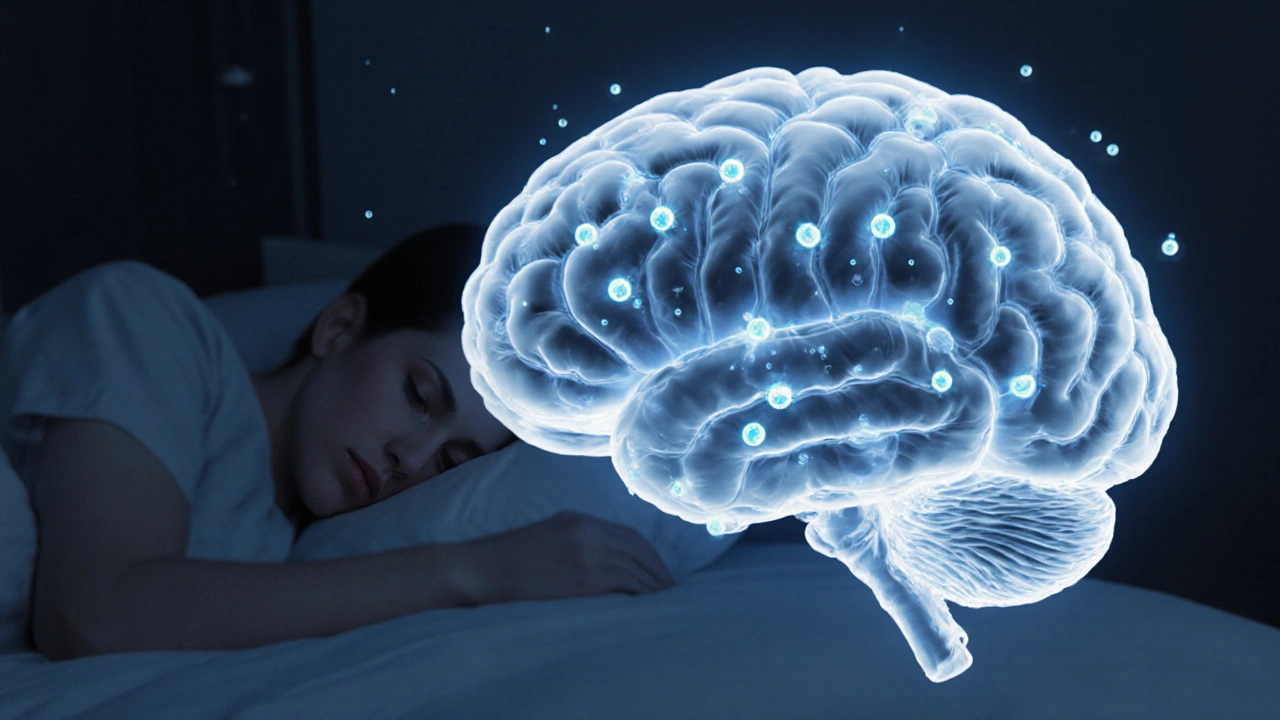
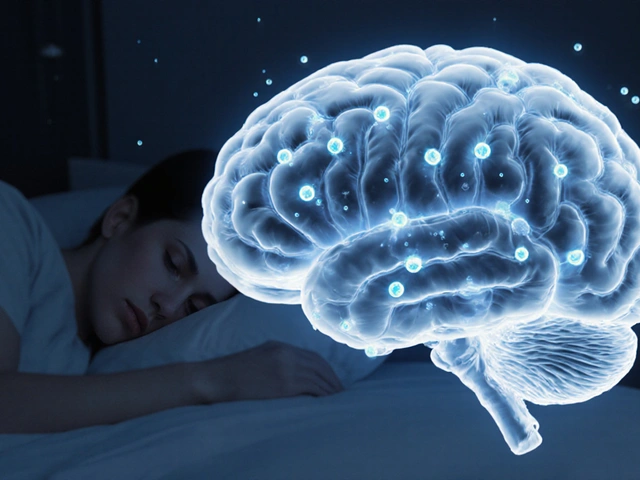
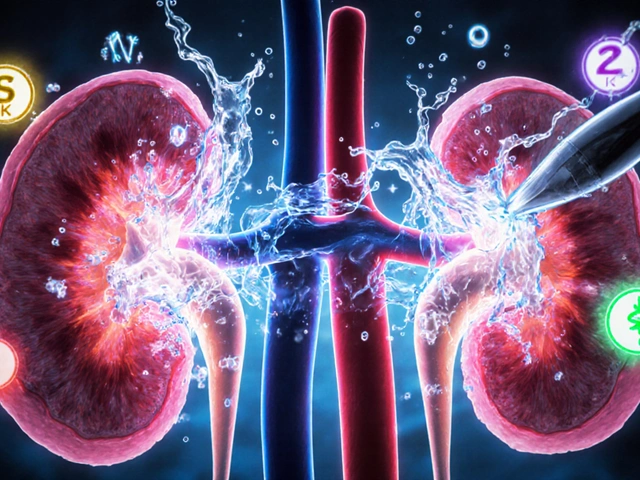

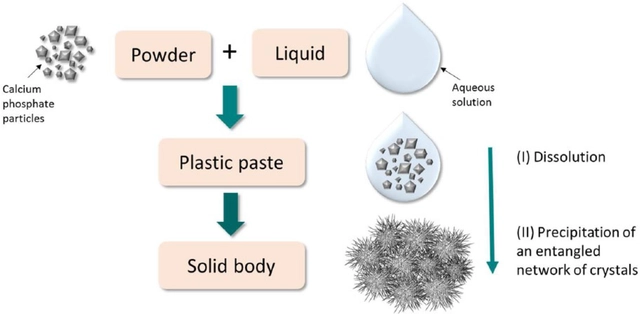

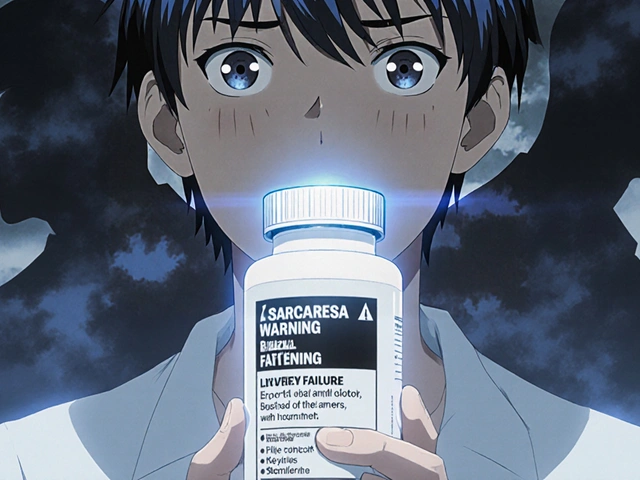
Comments
While the biochemical link between hyponatremia and sleep fragmentation is certainly intriguing, one must not overlook the socio‑economic patterns that drive excessive water consumption and low‑salt diets in certain demographics; attributing insomnia solely to electrolyte imbalance borders on reductionism, and the literature would benefit from a broader epidemiological lens.
In contemplation of the body's internal equilibrium, it becomes evident that sodium, as a custodian of osmotic homeostasis, subtly governs the nocturnal cadence of neuronal fire; thus, the perturbation of this balance invites a philosophical inquiry into how physiological perturbations echo within the phenomenology of sleep.
Really, if you’re feeling groggy at night think about checking your electrolytes it’s a simple blood test and if the sodium’s low you can talk to your doctor about fluid restriction or maybe a salty snack it could make a big difference in how rested you feel.
Let me correct the common misconception: hyponatremia is not merely a “water‑intake problem,” it is a pathophysiological state that alters neuronal excitability via shifts in extracellular osmolarity; prompt recognition and evidence‑based correction-preferably with isotonic saline under monitored conditions-are essential, especially in a nation where healthcare literacy varies wildly.
It is a moral imperative, dear readers, to recognize that the silent tyranny of low sodium does not merely affect the individual but erodes the very fabric of communal health; when a patient awakens coughing, gasping, or simply feeling a lingering fog, it is not a mere inconvenience but a symptom of a deeper societal neglect of basic nutritional education. The cascade begins with an unchecked intake of free water, often promoted by fad diets that glorify dehydration as a virtue, and culminates in cellular edema that distorts neural transmission. This distortion manifests as fragmented sleep, heightened anxiety, and in severe cases, seizures that shatter families. Moreover, the pharmaceutical industry, ever eager to monetize, pushes diuretics without adequate counseling on electrolyte balance, effectively weaponizing hyponatremia against the unwary. One must also condemn the complacency of medical curricula that relegate electrolyte disorders to a footnote rather than a cornerstone of physiology. The ethical obligation lies in proactive screening, especially among the elderly, whose diminished thirst response makes them vulnerable. Healthcare providers must adopt a holistic view, integrating dietary counseling with vigilant monitoring of serum sodium. In parallel, public health campaigns should champion moderate salt intake, dispelling the myth that all sodium is harmful. Finally, patients themselves must be empowered to question prescriptions that ignore their sodium levels, for silence in the face of such imbalance is a betrayal of one’s own right to restful, restorative sleep.
Honestly the connection is as clear as day-low sodium throws your brain off balance and you can’t sleep! But dont think its just an easy fix, you gotta be diligent,track your fluid intake, talk to your doctor about medication adjustments, and maybe even add a pinch of salt to your dinner-its not rocket science-just common sense. If you ignore it you’ll end up tossing all night and looking like a zombie tomorrow! Trust me i have seen it happen.
Friends, have you ever considered that the “sleep‑risk calculator” might be a front for a larger agenda? The pharmaceutical conglomerates love to push pills for insomnia while quietly overlooking the root cause-electrolyte depletion fostered by their own “low‑sodium” diet trends. It’s all a grand design to keep us dependent on their nightly prescriptions. While you’re busy counting sheep, they’re counting profits. Stay vigilant, interrogate your lab values, and demand transparency from those who profit from your restless nights.
Hey everyone! Just wanted to say that checking your sodium levels is a simple step that can really boost your sleep quality-keep it up and you’ll notice the difference.
From a culturally inclusive standpoint, it’s important to recognize that dietary patterns across different societies influence sodium intake; for example, traditional Indian meals often incorporate spices with added salt, whereas some East Asian diets rely on soy sauce. Health professionals should tailor advice to these culinary contexts, ensuring that recommendations for fluid restriction or salt supplementation are respectful and effective.
Honestly, I’ve seen these calculators before and they’re just a gimmick that overcomplicates a straightforward issue-just get a basic blood test and adjust your water intake accordingly; the rest is fluff.
Too many people ignore low sodium.
Some think the government is hiding the true prevalence of hyponatremia‑related sleep disorders, but the data is out there if you look beyond the mainstream channels; the truth is often inconvenient.
Quick tip: if you’re on a thiazide diuretic, ask your physician about monitoring sodium levels; it can prevent night‑time bathroom trips and improve sleep.
Remember to keep a sleep diary alongside your lab results; spotting patterns will help you and your clinician fine‑tune treatment without over‑relying on medication.
Be patient with yourself as you adjust fluids and diet; improvements in sleep often come gradually, not overnight.
This whole calculator feels like an overengineered solution for a problem that many could solve with a simple dietary tweak.
Our nation’s health is suffering because we keep ignoring basic electrolyte balance; it’s time we prioritize real science over quick‑fix hype.
In collaboration with fellow readers, I recommend a step‑wise approach: (1) obtain serum sodium measurement; (2) evaluate current medication regimen; (3) implement fluid restriction if indicated; (4) reassess sleep quality after four weeks. This systematic plan aligns with best practice guidelines and should yield measurable improvement.
Yo, nobody’s gonna fix your insomnia unless you actually listen to your body’s need for a little salt-stop the nonsense.